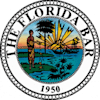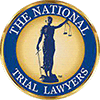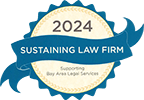A Professional Association (P.A.) is a legal entity that unites experts in a particular field to further their shared interests and goals. Within the realm of law, a P.A. can refer to a collective of legal professionals, such as attorneys with the title of Esquire or paralegals, who band together to offer legal services and advance their profession. The term “P.A.” is often found after a law firm’s name, indicating that the legal professionals have established a separate entity to run their firm, thus reducing their personal liability related to the firm’s operations. This article provides a comprehensive understanding of the concept of a P.A. in the field of law, its formation, advantages, and professional responsibilities, with special emphasis on its role in minimizing personal liability for legal professionals who operate a law firm under this structure.
When a law firm functions as a Professional Association, it signifies that the firm’s owners have opted to create a separate legal entity to manage the business aspects of their practice. This choice is generally made to shield individual attorneys, who may hold advanced degrees such as an LL.M., a J.D., an LL.B., or a J.S.D., from the financial risks and liabilities that can emerge from the firm’s activities, like malpractice claims or business debts. By forming a P.A., the lawyers, including JPs who perform judicial duties or preside over small claims courts, can continue to provide high-quality legal services to their clients while reaping the benefits of a more secure and organized business structure.
Formation and Structure
A Professional Association (P.A.) is typically established under state law, with requirements and regulations varying from one jurisdiction to another. To form a P.A., legal professionals must follow these steps:
- Choose a unique name: The name should include the term “Professional Association” or its abbreviation “P.A.” to clearly indicate the firm’s organizational structure. This distinction is important for clients, as it assures them that the attorneys are operating under a separate legal entity that offers certain protections and benefits.
- Draft and file articles of incorporation: These documents outline the purpose, structure, and governance of the P.A., and must be filed with the appropriate state agency. The articles of incorporation should include information about the P.A.’s purpose, duration, management structure, and how the firm plans to operate within the scope of the law.
- Establish bylaws: Bylaws detail the internal governance, membership criteria, and operating procedures of the P.A. They also outline the rights and responsibilities of the P.A.’s members, as well as the processes for electing directors, making decisions, and amending the bylaws.
- Obtain necessary licenses and permits: Depending on the jurisdiction, a P.A. may need specific licenses or permits to operate, such as a business license or a certificate of good standing. Legal professionals forming a P.A. must ensure they comply with all state and local regulations, including any requirements for professional liability insurance.
- Register with the state bar association: In some states, a P.A. offering legal services must register with the state bar association and adhere to its rules and regulations. This registration helps maintain professional standards and ensures that the P.A. operates ethically and responsibly.
Benefits
Operating a law firm as a Professional Association (P.A.) offers various benefits to legal professionals, including:
- Limited liability: One of the main advantages of forming a P.A. is the limited personal liability it provides to its members. By operating under a separate legal entity, attorneys can protect their personal assets from the financial risks and liabilities associated with the firm’s activities, such as malpractice claims or business debts.
- Tax benefits: Depending on the jurisdiction, a P.A. may offer certain tax benefits, such as pass-through taxation, which allows the firm’s income to be taxed only at the individual level, avoiding double taxation.
- Networking opportunities: By joining a P.A., legal professionals can connect with peers, share knowledge, and foster relationships that can lead to business referrals and career growth.
- Professional development: P.A.s often organize seminars, workshops, and conferences to help members stay current with legal trends, developments, and best practices.
- Advocacy: P.A.s can serve as a collective voice to advocate for their profession’s interests on legislative, regulatory, and public policy matters.
- Resources: Membership in a P.A. often grants access to valuable resources, such as legal research databases, continuing education programs, and practice management tools.
- Prestige: Belonging to a P.A. can enhance a legal professional’s reputation and credibility within the legal community and with potential clients.
Professional Responsibilities
Members of a Professional Association (P.A.) in law are expected to uphold certain ethical and professional standards. These responsibilities include:
- Competence: P.A. members must maintain the necessary skills and knowledge to provide competent legal services to their clients. They should stay up-to-date with changes in the law, legal precedents, and best practices within their area of expertise.
- Confidentiality: Legal professionals must protect their clients’ confidential information and maintain attorney-client privilege. They should have systems in place to ensure the security and privacy of client data, both in physical and digital formats.
- Integrity: P.A. members should act with honesty and integrity in their professional dealings, avoiding conflicts of interest and upholding their fiduciary duties to clients. This includes being transparent about fees, communicating clearly with clients, and providing candid legal advice.
- Pro bono service: Members of a P.A. are often encouraged to provide pro bono legal services to underserved individuals or communities. This commitment to social responsibility can strengthen the P.A.’s reputation and demonstrate a genuine concern for the well-being of the community.
- Continuing education: P.A. members should engage in ongoing professional development to stay abreast of changes in the law and maintain their professional competence. Many P.A.s offer or facilitate access to continuing legal education (CLE) courses to help their members fulfill this responsibility.
- Compliance: P.A. members must ensure that their firm remains in compliance with all applicable laws and regulations, including those governing the practice of law, client trust accounts, and business operations.
Conclusion
A Professional Association (P.A.) in law is a valuable resource for legal professionals looking to advance their careers, network with peers, and contribute to the legal community. By forming or joining a P.A., attorneys and other legal professionals can access educational opportunities, advocacy support, and professional resources while enjoying the benefits of limited personal liability and a more organized business structure. By adhering to high ethical and professional standards, P.A. members can provide high-quality legal services to their clients and promote the overall integrity of the legal profession.







